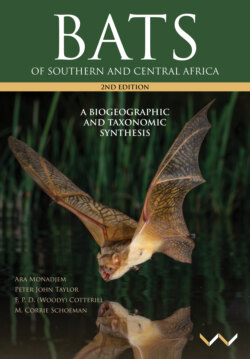Читать книгу Bats of Southern and Central Africa - Ara Monadjem - Страница 48
На сайте Литреса книга снята с продажи.
SPECTRUM ANALYSIS
ОглавлениеAny acoustic signal can be graphically or mathematically represented in two ways: time domain and frequency domain. A time-domain graph shows how a signal changes over time, while a frequency-domain graph shows how much of the signal lies within each given frequency band over a range of frequencies. A pure tone is called a sinusoid because its amplitude is a sine function in the time domain. In the frequency domain, it is a vertical line. Any continuous sound, no matter how complex, can be represented as the sum of sinusoidal components, because each pure tone has a particular amplitude and time relationship relative to the other pure tone components.
Spectrum analysis is the process of converting the time-domain signal to a frequency-domain signal, showing how different frequency components contribute to the sound. Fourier transformation is the mathematical function that is often used to convert the time-domain form to a frequency-domain representation or spectrum. An individual spectrum contains no information about temporal changes in frequency composition of the spectrum. A spectrogram shows how the frequency composition of a signal changes over time. The spectrograms in this book are based on a Fast Fourier Transform algorithm. A Hanning window was used to eliminate the effects of background noise (Figure 38).
Figure 38. A spectrogram depicting a HD-CF call: the frequency in kilohertz (kHz) is shown on the vertical axis and the time in milliseconds (ms) on the horizontal. Colours represent amplitude (‘loudness’) in decibels; darker colours depict the louder components of the call.
